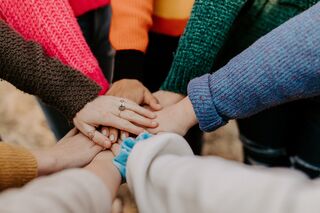Addiction
Does Isolation Feed Addiction?
Dislocated or simply lonely people are more vulnerable to drugs.
Posted August 31, 2022 Reviewed by Lybi Ma
Key points
- Addiction may be a disease of isolation or dislocation.
- Most people who try to overcome a substance abuse problem do succeed.
- Support groups, like the 12-Step AA model, can help.

Early in the response to the coronavirus, Dr. Marvin Seppala, chief medical officer at the Hazelden Betty Ford Foundation warned that moving people in recovery from addiction to online meetings could have a price. “We consider addiction a disease of isolation,” he said.
Substance use and drug overdoses have risen since the Covid-19 pandemic was declared a national emergency in March 2020. The National Institute on Drug Abuse stresses that people cannot simply will themselves to get better. But one thing we all can do is recognize the danger of substance abuse when we are feeling isolated. And should we become addicted, we need to recognize when we need help from other people to recover.
Connection can heal
People do get better: about three-quarters of people who try to overcome a substance use problem succeed. For half, it takes only two attempts, according to the Recovery Research Institute. In a survey of the U.S. population, 9 percent said they had overcome a substance problem, and more than half of those said they had sought help, most often through a support group.
But what if you’re addicted to something rough, like heroin? It’s true that many performers have died of heroin overdoses. But we hear less about the ones who overcame their addiction, including Eric Clapton and Keith Richards.
The experience of American soldiers in Vietnam demonstrates that many people can drop a heroin habit. In 1971, when researchers interviewed nearly 1,000 soldiers in the U.S Army leaving Vietnam, 20 percent said that they had become addicted to heroin while on duty. Usage and addiction dropped to around 1 percent once the soldiers had returned to the US. Coming home was the cure.
What happens today when a large population of people encounters heroin for the first time? It seems to depend on their social circumstances. In hospitals, people may receive diamorphine, a cleaner form of heroin, for pain relief, sometimes for months. About a quarter should become addicted; however, very few continue to need the drug after they recover. As Johann Hari, author of Chasing The Scream: The First and Last Days of the War on Drugs, writes, “The same drug, used for the same length of time, turns street-users into desperate addicts and leaves medical patients unaffected.”
Some argue that this makes the most sense if you see drug use as a choice, rather than a compulsion. We all like pleasure, they say, but will forgo it for the sake of other values such as doing a job well or caring for children. Clearly, some people experience more powerful urges than others and the same person may be more or less vulnerable depending on circumstances. The medical patients didn’t seek out the drugs and are more likely to have family and work that they value. The street users who sought out the drugs are more likely to be at loose ends.
Why is the lovely city of Vancouver packed with substance users? Because it is a place that people leave home to move to, says Vancouver psychologist Bruce Alexander, who sees addictive behavior as a response to “dislocation.” Alexander argues that throughout history, people have turned to addiction when they felt a lack of meaningful ties. Addiction isn’t really a medical problem, he says, but a social one. When people feel at loose ends, they focus too much on one activity — gambling, say — or a sensation produced by a drug, and gradually become even more disconnected from other areas of life.
Alexander illustrated the point in a controversial study with rats. The “Rat Park” results aren’t widely cited in the scientific literature, and attempts to replicate the results have been mixed. Alexander argued that he had showed that isolated rats in bare cages were much more likely to drink water laced with morphine, a form of heroin, than rats in a colony in a pleasant cage with toys and cedar shavings. This comic by Stuart McMillen explains the study further.
Many people who do have strong social ties fall into addictions—sometimes, but not always, because their group is built around the drug. If your real friends are at the local bar, it's harder to stop going there. Historically, addiction was common in industries where people did business over alcohol.
Again, addiction emerges as a social problem.
What now?
The number of U.S. prescriptions for painkillers has dropped since the opioid epidemic hit, and in 2020 was at the lowest level in 15 years. But in pockets of the country, the rate can be nine times higher than the average. Many people seem to have trouble limiting their use of painkillers, especially if they have anxiety or depression and are under the age of 55.
The best way to help people may be to provide services that knit them into a community—secure housing, jobs, and business loans, Hari argues. When Portugal decriminalized all illegal drugs in 2001, and concentrated on providing services instead, illegal drug use and related crime both fell. More than 25 countries have removed criminal penalties for the personal possession of some or all drugs in this century.
Here in the United States, Alcoholics Anonymous, a support group program of volunteers, has the best record of helping alcoholics. Modeled on AA, 12-step practices have become the norm in substance abuse treatment. A key element is a connection with the group, people who want you to succeed and thrive.




